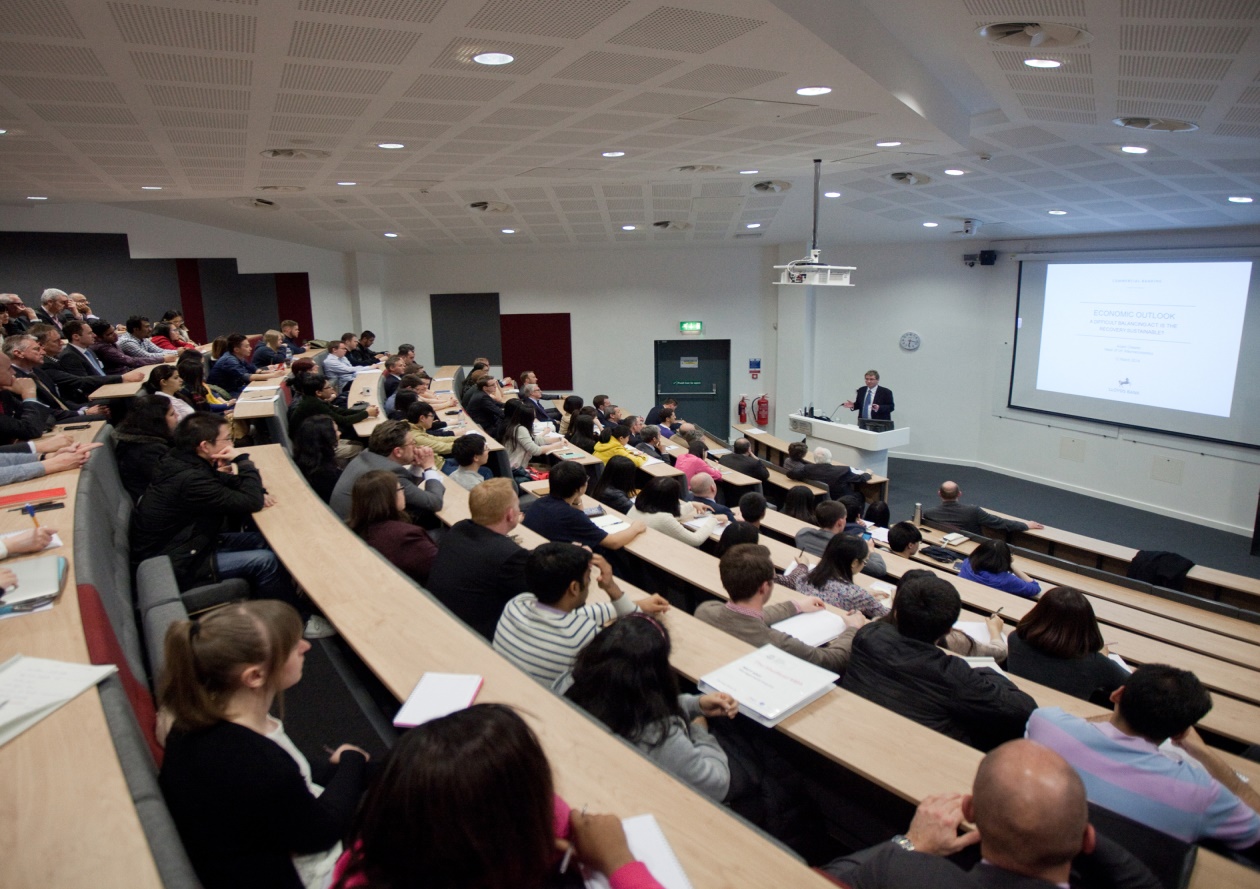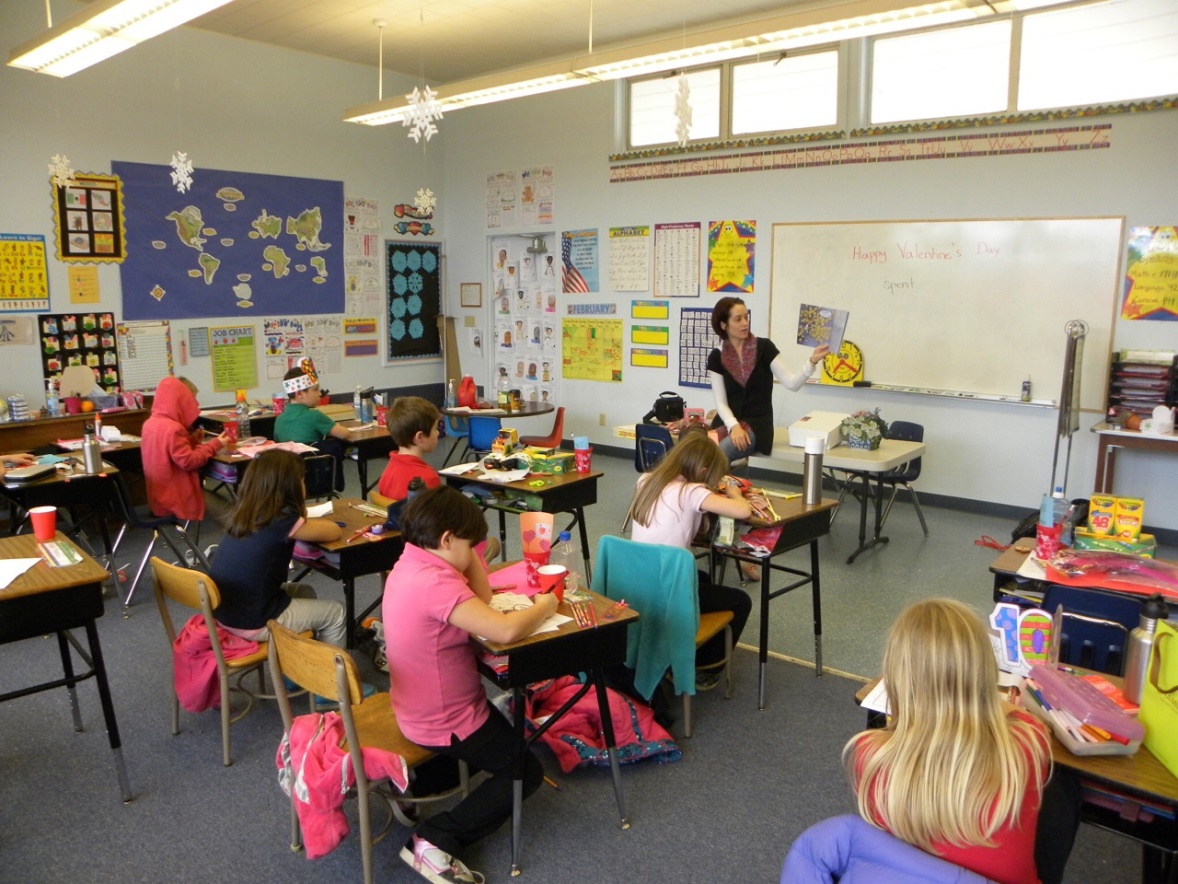Пояснительная записка
В данной методической разработке собраны 10 текстов для работы на уроках английского языка при использовании таких эффективных методов изучения иностранных языков как диктоглосс и теневой повтор. Остановимся на краткой характеристике этих методов.
Что такое диктоглосс? Диктоглосс - это тип поддерживаемой диктовки. Учитель читает (или включает запись) короткий, связанный с учебной программой текст несколько раз, и учащиеся пытаются создать свою собственную версию, максимально приближенную к оригиналу. Идеальный текст диктоглосса находится на уровне языка немного выше, чем у учащихся, но со знакомым предметным содержанием. Это может ввести некоторые новые словари или структуры предложений. Такой вид работы включает следующие этапы:
1) Учитель читает короткий текст на знакомую тему с нормальной скоростью. Или ставит аудиозапись.
2) Учащиеся слушают и делают заметки.
3) Учитель повторяет чтение или ставит запись повторно.
4) Учащиеся формируют пары и делятся своими заметками.
5) Учитель читает текст в последний раз с нормальной скоростью
6)Учащийся объединяет четыре формы, чтобы создать окончательную письменную версию текста.
Цель состоит в том, чтобы максимально приблизиться к оригиналу. Диктоглосс может быть использован во всех областях учебной программы и на всех уровнях владения английским языком. Он подходит для использования с учащимися в возрасте восьми лет и старше.
Второй метод называется shadowing (теневой повтор), где учащиеся следуют за диктором, полностью имитируя его произношение, темп, интонацию и фразовое ударение. Техника считается весьма эффективной: имитируя речь носителей с максимальной точностью, можно стимулировать мозг интенсивно работать. И, если всё делать правильно, то результат от занятий гарантирован. Секрет успеха этого метода в том, что shadowing отчасти помогает учить язык так, как осваивают родной язык дети. Они ведь не учат правила родного языка, а делают куда проще: слушают речь родителей и просто повторяют её. Много-много раз, пока она нужная фраза или слово не отложится в голове.
5 причин практиковать shadowing:
улучшить произношение ✅
Shadowing заставляет нас изучать не отдельные аспекты фонетики, а всё сразу: произношение, интонацию, фразовые ударения, темп речи. Но на этом польза от занятий не заканчивается: можно научиться приёмам, которые используют носители в живом общении, например, добавлению слов-филлеров, позволяющих избегать неловких пауз в речи.
усвоить структуру предложения ✅
Прослушивание и повторение английской речи творит чудеса: учащиеся подсознательно начинают усваивать структуру предложений. Спустя время они начинают лучше понимать построение фраз и находить шаблоны, которыми будешь пользоваться в речи.
активировать лексику ✅
Благодаря этой технике учащиеся могут освоить много лексики и с помощью примеров понимают сочетаемость новых слов. Так не только удобно учить новые слова, но ещё и выводить их из пассивного в активное состояние.
достичь беглости ✅
С этой техникой ты достигаешь классических целей студентов нестандартным способом. Тренируясь, учащиеся словно находятся на репетиции перед настоящим общением с носителем.
погрузиться в культуру ✅
Выбирая интересные тексты, видео или аудио, учащиеся будут слушать речь носителей, погружаться в другую культуру и чувствовать результат занятий — а потому получать удовольствие от нестандартных занятий.
Сколько раз повторять текст? Александр Аргульес, лингвист, основавший метод, советовал адаптировать эту технику под себя, то есть самому решить, как тебе заниматься. Небольшие треки можно прослушивать по 10-20 раз, а большие тексты обычно повторяют по 2-3 раза. Также тренировку можно делить на несколько дней.
Тексты взяты с сайта learnenglish.britishcouncil.org и начитаны носителями языка.
Task 1 (C1)
Innovation in business
| 
Welcome to today's Business4U podcast. The focus of this podcast is to think about innovation and why it's important, and also to look at different types and stages of innovation. By the end of it, you will hopefully have a better grasp of the topic of innovation and be able to better understand and drive innovation in both your working and personal lives.
So, why is innovation important? Well, simply put, without innovation it would be difficult to make progress. Organizations and societies would stagnate. Innovation is what drives us forward. It's what forces us to compete in the business world. It's what leads to better products and services, and solutions to new and existing problems. From a business point of view, it's also something which is necessary for survival.
Four key types of innovation are incremental, disruptive, architectural and radical.
Incremental innovation involves innovating in increments, or small stages. Step by step. It focuses on existing markets and technologies and aims to make improvements and design changes to existing products and services. Disruptive innovation aims to bring new ideas, like technology or processes, to existing markets. In that sense, the innovations will disrupt the market and the companies currently serving that market. The first touchscreen smartphones disrupted the mobile phone industry because up to then, mobile phones had buttons and keypads. Architectural innovation involves taking successful ideas from one market or industry and applying them to a new or different market. This often happens when people think of other unconventional uses of existing technology. A good example of this can be seen in vacuum company Dyson's entry into the hand dryer and hairdryer market. Their advanced airflow technology from their vacuum cleaners was applied in reverse to machines that blow out air. In the case of these examples, it's personal hairdryers and hand dryers in public toilets. And finally, we come to radical innovation. This is where a completely new idea is created for a market that doesn't exist yet. It's often what we think of when we think of innovation and it often swallows up existing markets. For example, the birth and growth of digital and downloadable music has practically led to the death of music CDs, and even DVDs. Similarly, film and TV streaming services may lead to the demise of traditional TV within a few short years. Moving on from types of innovation, let's have a quick look at five key stages of innovation. The first stage is Idea generation. This is where you think of the initial idea and develop it into a more detailed proposal or plan. The next stage is Support. You need to check if you can get support for it, for example from senior leaders or stakeholders in your company. If you're innovating in your personal life, then the support you might need could be from friends or family. Do they think it's a good idea and do they think it would work? The third step is to Experiment and test out the idea. This could mean creating a sample or a prototype of it, if it's a product. Or if it's a service, you could test out a basic version of it. The fourth step is Evaluation. You need to assess how successful your experiments were and what chances of larger success your idea will have. And finally, you then need to actually Implement your idea. That's the fifth stage. So, there you have it. We've looked at four key types of innovation: incremental, disruptive, architectural and radical, and also five stages of successful innovation: firstly, idea generation. Then, get support. Next, experiment and test out the idea. The fourth stage is evaluation and finally implementation. |
Glossary: grasp (n), stagnate (v), increment (n), improvement (n), disrupt (v), keypad (n), apply (v), in reverse (adv), demise (v), proposal (n), stakeholder (n), implementation (n)
Task 2 (C1)
Introverts – redressing the balance
| 
If I asked you to describe a great leader, I'd be willing to bet certain traits come to mind … someone charismatic, dynamic, inspiring, a confident public speaker. You're probably imagining a man too, but that's a bias we'll save for another talk! We tend to think of great leaders as people who naturally take to the stage, who draw other people to them by their sheer presence, who are extroverts. But history has also been transformed by people who don't fit these descriptions. People like Rosa Parks, Eleanor Roosevelt and Gandhi. These people would have described themselves as shy, quietly spoken … as introverts. Of course we're drawn to extroverts. They're usually charming and persuasive, fun to be around. They're not quietly in the corner somewhere reading a book where we might not notice them. Introverts are mostly happy to let the extroverts take the attention; they'd rather not be in the spotlight, they'd rather finish that book. If they become leaders, it's not because they want to be the centre of attention, it's because they feel compelled to act. They lead not because they enjoy giving orders but because circumstances have put them in a position to make change. If they're the boss, they allow space for the ideas of others to grow because they're not trying to make their mark. An introvert sounds like a pretty good boss, right? You won't need to worry about them stealing your ideas or talking over you in a meeting. Some of our great creators are introverts too. People like the writer JK Rowling, the great thinker Darwin and the designer of the first Apple computer, Steve Wozniak. It turns out coming up with good ideas is easier when you're engaged in quiet, solo contemplation than when you're leading the cheerleading squad. Not that I'm saying there's anything wrong with cheerleaders! Extroverts are great – some of my favourite people are extroverts. But why is the world so set up for extroverts and so hard for introverts? Why are we always encouraging our kids to speak up, join in, work as a team? Nowadays, most schools and most workplaces are set up with the extrovert in mind. Children no longer sit in rows in desks, they sit in groups of four or six, doing group projects. Even subjects like maths and creative writing are taught with an emphasis on group collaboration, even though most writers sit alone in front of their computer or typewriter, with nothing between them and the blank page. A kid who prefers to go off into a corner and work alone starts to look like a problem. What's wrong with Janie? Why isn't she joining in? Studies show teachers think extroverts make better students, even though introverts actually tend to get higher grades. We're telling our introverted kids something is wrong with them, that they need to be more sociable, more outgoing. We're giving them fewer opportunities for the quiet contemplation they need in order to produce the best work and be their best selves. And then at work we do the same. Most offices today are open plan, everyone working and creating noise in one big room, attending team-building workshops or group brainstorming sessions; the introverts' worst nightmares. The introverts at school are judged negatively by their teachers and when they reach the workplace, they're passed over for promotion into leadership positions. But introverts typically take fewer risks and make more careful decisions, and don't we need those traits too? I'm not saying let's get rid of extroverts and grab all those talkative, sociable performers at primary school and send them off to the library for four hours a day of solitude until they learn to tone it down. I'm not saying that at all. I'm saying we're doing something like the opposite of that to introverts and we need to stop. We need to allow them space to be themselves and then we'll end up getting the most out of our extroverts and our introverts. Let's teach all our kids how to work with others and how to work on their own. Let's create space in offices and at conferences for people to work on their own when they want to and give them the opportunity to come together to share ideas. Let's give staff 'away days', where they go off into the woods, walk up a mountain or wherever, to work on something alone, as well as the 'team-building day' where everyone learns to dance salsa together. The future is complicated, with a lot of huge, complex problems to solve. Let's make sure we've got our best people working on those problems in the way that suits them best. And then we've got to make sure we listen to our extroverts and our introverts and everyone who sits somewhere in between on the scale. We're going to need all of them. |
Glossary: inspiring (adj), persuasive (adj), spotlight (n), compel (v), circumstances (n), contemplation (n), quad (n), emphasis (n), opportunity (n), solitude (n), complicated (adj), scale (n),
Task 3 (B 2)
A design presentation
| 
Hi, everyone. Thanks for coming to this short presentation on our new product design. As you know, we've already redeveloped our 'Adventure' shampoo to make it more modern and appealing. And we've renamed it 'Adventure Tech'. Our market research established the target market as men in the 18–40 age range who like to be outdoors and also like technical gadgets, such as smartwatches, drones and things like that. We needed to create a bottle which appeals to that market. So, today, I'm happy to unveil our new bottle design. As you can see, it's designed to look like a black metal drinking flask, with some digital features printed on it. I'd like to talk you through the following three points: the key features, sizing and our timeline for production. Firstly, you'll notice it has an ergonomic design. That means it fits smoothly into your hand and can be easily opened and squeezed using one hand. And, it looks like a flask you might use when hiking outdoors. The imitation digital displays are designed to remind the user of other tech devices they may have, such as a smartwatch or smart displays in their home. I'd now like to tell you about the sizes. It comes in two sizes: the regular size and a small travel size. The travel size is the same type of design – a flask, also with imitation digital displays on the bottle. We were thinking of starting with one and following with the travel-size in a few months, but we've worked hard and both are ready now. Finally, I'm going to talk to you about our timeline for production. You've probably heard that we're launching in two months. In preparation for that, we're starting the marketing campaign next month. You can see the complete overview of all phases in this Gantt chart. In summary, the bottle's been designed for men who like adventure and technology, and it comes in two sizes. The marketing campaign is starting next month and we're launching the product in two months. OK. So, any questions? Feel free to also email me for further information in case we run out of time. |
Glossary: redevelop (n), outdoors (adv), unveil (v), flask (n), timeline (n), ergonomic (adj), squeeze (v), imitation (n), launch (v), overview (n).
Task 4(B 2)
A talk about motivation
| 
So, we think we know how to motivate people, right? Offer them a reward. Do this and you'll get this. Do this faster, earn more money. Do this better than everyone else, here's a promotion. We offer incentives when we want people to do things. We do it at work, at school, even at home with our kids. Tidy your room and you can watch TV. But when social psychologists test whether incentives work, they get surprising results. Sam Glucksberg, from Princeton University, America, set people a problem to solve and told them he was going to time them to see how long they took. Then he put them in two groups. He offered one group a reward for finishing fast. Five dollars for anyone finishing in the top 25 per cent and 20 dollars for the person who finished the fastest of all. To the other group he offered no incentive, but he told them he was going to use their times to calculate an average time. The first group, the ones with the reward, solved the problem faster, you'd think, right? Well, no, they actually took three and a half minutes longer than the group who just thought they were being timed. Incentive didn't work. In fact, it made them slower. This experiment has been repeated, with the same results, many times. But in business we still offer bonuses, promotions and rewards to staff. That's fine if we want them to do something simple, like chop wood. We'll pay you more if you chop the wood faster. An incentive works then. But if we want someone to do something complex, something creative, something where they have to think, rewards don't work. They might even have the opposite result, and make people perform worse. Another study, by Dan Ariely, showed that the bigger the reward, the worse the subjects performed on a complex task. The reward made them focus so hard on the result that they couldn't think creatively any more. And this all matters because more and more simple jobs will become automated. We'll be left with creative, problem-solving jobs that computers will never do. And we need to find a way to motivate people to do those jobs when we've proved the traditional incentives don't work. So what does work? Giving your workers freedom; freedom to work on the things they want to work on, freedom to choose when, where and how they work. Want to work from home three days a week, get up late and work into the night instead? Fine. Just do the job well. And evidence shows people who choose the way they work get results. Companies that give employees time during the week to work on things that interest them and are not part of their regular job achieve amazing things. Some of the big tech companies are good examples of this, with ping-pong tables and areas to relax in … |
Glossary: reward (n), incentive (n), calculate (v), average (adj), complex (adj), creatively (adv), freedom (n), evidence (n), achieve (v), employee (n).
Task 5(B 1)
Weather forecast
|

Hello and good morning! Well, we're off to a good start in the south this week, as most of the rain from the weekend has disappeared – just a few patches of cloud and maybe some showers here on the east coast. They'll all clear up by lunchtime, though. Over the next day or so, London and the area around Kent can expect a couple of isolated showers, but mostly dry through until Thursday.
It's not such good news for the north-west this week, I'm afraid: more wet weather, and not a lot of sunshine. Some of today's showers will be heavy – and even thundery in Manchester and across the Pennines. Leeds will escape the thunderstorms, with drizzle and light rain only throughout the rest of the day and tonight.
Elsewhere it becomes dry today, but with some foggy patches towards Wales. In England, tomorrow morning will see a dry, bright start in most places, with high temperatures throughout the week. We might see one or two thunderstorms appearing as the week goes on, with temperatures everywhere at 29 to 30 degrees.
By the weekend, unfortunately, the dry weather will make way for mostly cloudy skies and rain. The rain will move from Scotland, down towards the north and reach the south coast by Saturday afternoon. Temperatures, at least, will stay mostly warm at around 21 degrees for the weekend. It might feel like a nice change from the high twenties and early thirties we'll see in the week. That's all from me until tomorrow. Enjoy the mini-heatwave while you can! |
Glossary: patch (n), isolated (adj), thundery (adv), thunderstorm (n), drizzle (n), throughout (prep) heatwave (n)
Task 6 (B 1)
An introduction to a lecture
| 
Good afternoon, everyone. Welcome to the first lecture of our new course in Positive Psychology. While some people may associate psychology with looking at what's wrong with us, and at what problems we have, there is much more to psychology than that. Positive psychology, for example, looks at how to help people become happier.
This lecture begins with a question: what makes a happy life?
Now, I'm going to give you one possible answer. A happy life is a life in which you are completely absorbed in what you do. Now, how does this compare with what you and your partner said?
This answer comes from the work of Mihaly Csikszentmihalyi and the theory of flow. Csikszentmihalyi is a psychologist who has spent much of his professional life on the study of what makes people happy and how we can find happiness.
Csikszentmihalyi suggests the theory that happiness is not caused by external events or things that happen to us. Our perception of these things and how we see these events either makes us happy or sad. In other words, if we want happiness, we have to actively look for it. However, this does not mean that we should always look for happiness! Csikszentmihalyi believed that our happiest moments happen when we are in a state of flow.
The theory of flow can be summarised like this: when we are totally involved in, or focused on, what we are doing, we are in a state of flow. Csikszentmihalyi got the inspiration for this theory when he noticed how artists worked in a studio. They completely lost track of time, they didn't notice they were hungry or tired, and they could work for hours, even days, without stopping. Anyone I have spoken to who has experienced this state of concentration has said it's difficult to explain. The best way to explain it is that it is like being in a river and the flow of the water carries you away. For the rest of this lecture, I will explore this theory of flow in more detail. First we will look at Csikszentmihalyi's life, and how it influenced his ideas. Then we will look at the conditions that go with a state of flow. What creates flow, exactly? Finally, we will look at activities that can help us achieve flow in our everyday lives. Will this course make you happy for life? Well, maybe. Maybe.
Right, let's get started. If you look at the next slide … |
Glossary: associate (v), completely (adv), absorb (v), compare (v), suggest (v), summarize (v), involve (v), concentration (n), influence (v)
Task 7 (А 2)
Facts and figures
|  … and the next part of this talk is on the Panama Canal. It's amazing how this one small section of a small country can be so important to the world. Let's learn a little bit about the canal itself, before we look at how it connects to everything else. … and the next part of this talk is on the Panama Canal. It's amazing how this one small section of a small country can be so important to the world. Let's learn a little bit about the canal itself, before we look at how it connects to everything else.
The Panama Canal is an artificial waterway in the Central American country of Panama that connects the Atlantic and Pacific Ocean. It is only 82 kilometres long. If you go around South America by ship then you need to travel another 15,000 kilometres. So the canal saves a lot of travel time. It takes around 8 to 10 hours to cross the canal.
The French started building the canal in 1881, but they couldn't finish it. The project was started again in 1904 by the United States and the canal was finally finished in 1914. Many people died while they were building the canal, some say up to 25,000. For the rest of the 20th century, the United States controlled the canal, but gave control back to Panama in 2000.
Every year, around 40,000 ships come through the canal. These are mostly commercial ships. They transport goods for trade between Asia and America, or Europe. In 2016 the government of Panama made the canal bigger, so that now 99 per cent of ships can pass through it.
Let's now turn to the role of the Panama Canal in the global economy …
|
Glossary: amazing (adj), section (n), artificial (adj), control (v), through (prep).
Task 8 (А 2)
Instructions for the assignment
|  I want to explain a few things about your essay. I want to explain a few things about your essay.
First of all, the deadline. The deadline for this essay is October the 18th. Not the 19th, not the 28th, not two days later because your dog was ill or your computer broke – the 18th. If it's late, I won't mark it. I won't even read it – you'll fail the assignment! So, please hand it in on time. You can even hand it in early, if you like!
You can email me the essays at [email protected]. That's H-A-R-T-S-H-O-R-N. I'll reply to say I've got it. If I don't reply within a day, it might mean I didn't get it, so please email me again to make sure. You can also bring a paper copy of the essay to my office, but let's be kind to the trees, OK? Email is better for the trees and for me.
Don't forget that you must reference every idea or quote you use that isn't your own idea. And the last page of your essay should be a list of all the books you used, in alphabetical order, not in the order you used them!
And lastly, make it easy for me to read! That means use a clear font. Arial is best, but Times New Roman is fine too. Not Comic Sans please! Size 12 font for the essay, and size 14 for the titles and subheadings. And use page numbers. Any questions? |
Glossary: deadline (n), assignment (n), reference (n), quote (n), subheading (n)
Task 9 (А 1)
The first English class
|  Hello, everyone. Hello! It's nice to see you all here. Welcome to British Life and Language. I am your teacher. My name is Lindsay Black. That's L-I-N-D-S-A-Y Black. Before we begin, some information about the class. Hello, everyone. Hello! It's nice to see you all here. Welcome to British Life and Language. I am your teacher. My name is Lindsay Black. That's L-I-N-D-S-A-Y Black. Before we begin, some information about the class.
Our class is in room 13, on the first floor. When you go upstairs, turn left to find the room. Again, that's room 13. We have class twice a week, on Monday and Wednesday. Our class begins at 4.30 p.m. and lasts 90 minutes, so we finish at 6 p.m. That's 4.30 to 6. Please arrive on time, OK? Also, I have an office hour if you have questions. I'm in office 7B on the second floor. My office hour is Friday at 6 p.m. So, if you have any questions or problems or want to talk to me, it's Friday at 6 p.m. in office 7B. We begin next week, on March the 13th. That's Monday, March the 13th. The course ends on May the 20th. May the 20th is the last day. I think that's all ... Oh, one more thing. For this course you need the book. Here it is: British Life and Language Level 1 Student's Book. So, please get a copy of the book. I don't want to see any photocopies of the book, thank you! Remember, it's level 1 student's book. Don't buy the teacher's book. I think that's all, everyone. I look forward to working with you. See you next Monday!
|
Glossary: information (n), upstairs (adv), arrive (n), course (n), copy (v), look forward (v)
Task 10 (А 1)
A good night’s sleep
|  Host: At exam time it is important to sleep well. Today we have Doctor Baker with us in the studio and he is going to give us five top tips for getting a good night’s sleep. Welcome to the show, Doctor Baker. Host: At exam time it is important to sleep well. Today we have Doctor Baker with us in the studio and he is going to give us five top tips for getting a good night’s sleep. Welcome to the show, Doctor Baker. Dr Baker: Thank you. It’s great to be here. Let’s start with tip one. Don’t go to bed with the television on. Some people think they can sleep well with the TV on, but the noise and lights mean you don’t really sleep well, so turn it off! Tip two: Don’t think too much before bedtime. Do your hardest homework earlier in the evening. Do easier homework later. If your brain is too busy and full of ideas it takes longer to get to sleep. Tip three: Don’t play video games for an hour before you go to sleep. They also make your brain too busy and active. Tip four: Turn off your cell phone when you go to bed. What is so important that it can’t wait until the morning? If possible, leave your phone in another room. Tip five: Play music if you like. But don’t play it too loud. Turn the sound down low. Host: Thank you, Doctor. That is very useful advice for our young listeners.
|
Glossary: important (adj), noise (n), bedtime (n), brain (n), loud (adj), useful (adj)
3













 … and the next part of this talk is on the Panama Canal. It's amazing how this one small section of a small country can be so important to the world. Let's learn a little bit about the canal itself, before we look at how it connects to everything else.
… and the next part of this talk is on the Panama Canal. It's amazing how this one small section of a small country can be so important to the world. Let's learn a little bit about the canal itself, before we look at how it connects to everything else. I want to explain a few things about your essay.
I want to explain a few things about your essay. Hello, everyone. Hello! It's nice to see you all here. Welcome to British Life and Language. I am your teacher. My name is Lindsay Black. That's L-I-N-D-S-A-Y Black. Before we begin, some information about the class.
Hello, everyone. Hello! It's nice to see you all here. Welcome to British Life and Language. I am your teacher. My name is Lindsay Black. That's L-I-N-D-S-A-Y Black. Before we begin, some information about the class. Host: At exam time it is important to sleep well. Today we have Doctor Baker with us in the studio and he is going to give us five top tips for getting a good night’s sleep. Welcome to the show, Doctor Baker.
Host: At exam time it is important to sleep well. Today we have Doctor Baker with us in the studio and he is going to give us five top tips for getting a good night’s sleep. Welcome to the show, Doctor Baker. 

















